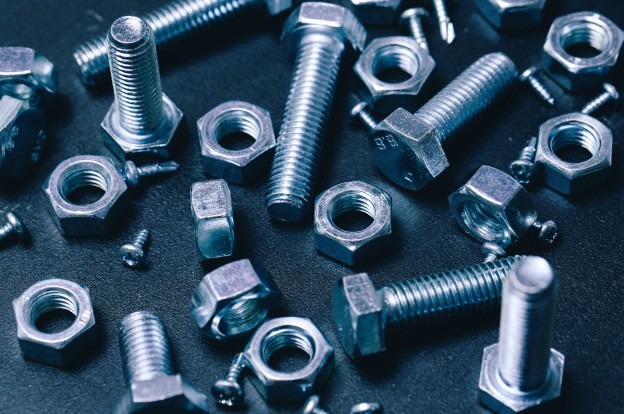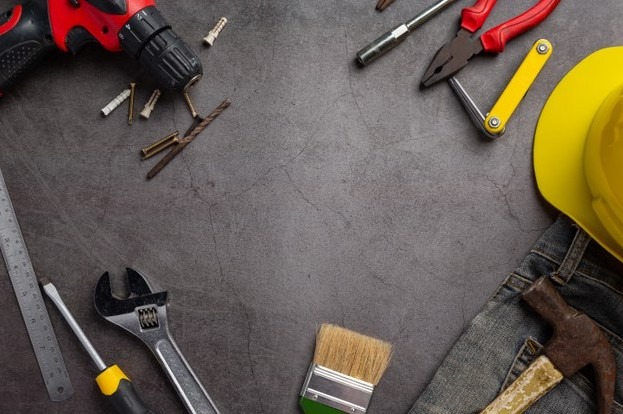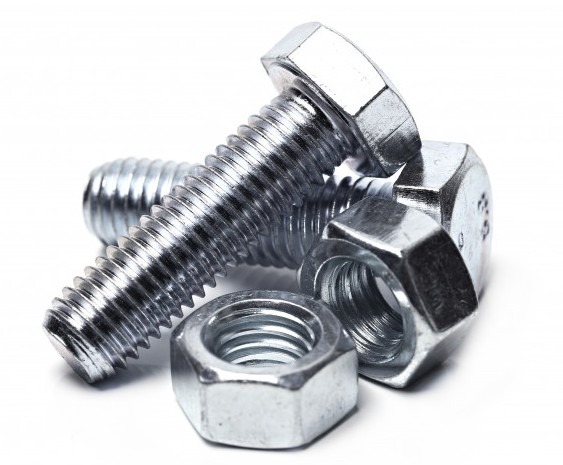Bolts are a type of fastener to secure two units together. With several variants of bolts out there, it gets difficult to decide which type you should get for the cupboard you want to build or the door lock that fell off. Hence, to help you in this ordeal, we are here with all the information you need. Information will surely help decide on the type of bolt that would best suit your needs.
To select the correct type for your mechanical needs and find a bolt worth your money, check our guide!
Types of bolts
Anchor bolt
These bolts are for concrete slabs. Usually, it has two ends, one with a rotatable screw and the other end with a metal disc. It can either be fixed into place when the cement foundation is set up or put in place with the help of a drilling machine after the concrete has solidified. They are used to provide structure to the concrete building.
Elevator bolt
They commonly have a flat bolt head with a long conical body. The body will either have rings or be plain. The rings are used for the bolt to rotate and fix into place. The head is supposed to hold the bolt tightly in place. These types of bolts help in making conveyor belts or escalators.
T-head bolt
This bolt is like the alphabetic letter T! The head is at a right angle to the body. Their specific shape allows these bolts to fit in any slot quite easily and firmly, making it impossible to move once fixed. Sometimes, during construction, it is hard to reach both sides of the bolt. In such cases, a T-head bolt with a T-slot track (a fastener channel) can fix a unit anywhere along.
U-bolt
Guess the shape of this fastener? It is a U! This bolt has two ends bent to face each other. The ends are threaded on both ends to have a screw fix it in place. There are two types of U bolts: one is curvy like a semi-circle or a U shape, and the other has sharp edges or squared edges. It is supposed to join two units together, each held by one end tightly screwed to the surface. Usually, they are covered or insulated with rubber to reduce noise, vibration, and wear and tear if both units rub against each other. Example of use includes exhaust systems.
Toggle bolt
Interestingly, this bolt has the shape of an airplane! It has two wings on each side, acting like a nut. The nuts are screwed against a wall and an object, holding it tightly in place. For example, mounting sculptures like chandeliers or any horizontal hangings placed on a wall use toggle bolts.
Hanger bolt
A Hanger fastener is a long cylinder with two different types of threading at each other. In general, one thread is a machine-bolt screw and a lag-screw head. They are for construction involving timber.
Hexagon bolt
Also known as tap bolt, this fastener is the most common type available in the market. Its head is shaped like a hexagon while the cylindrical part is threaded. It is for heavy-duty mechanical work such as bolting metal to metal or metal to wood.
A type of hex bolt is called a Tap bolt. The main difference is the length of threading. Hex bolts are threaded a small length after the head, while a tap bolt is threaded all the way.
Huck bolt
This bolt involves a collar to fasten any material between the collar and the threaded cylindrical pin of the bolt. Some huck bolts have an indent at a certain length in the thread. They help in making the grip more firm. Other hucks are free-size, and you can rotate the collar up to the head.
Lag bolt
A very hard and tough bolt, lag bolts are used for heavy-duty purposes. They are a bit thicker near the head joining, the end of the cylinder. It is for material that is going to bear a heavy load. You may use a screw additionally to make the connection more secure.
Machine bolt
Similar to hex bolts, machine bolts come with either a hex head or square head. At the other end of the cylinder are threaded to secure connection. They have sizes ranging in diameter: a quarter of an inch to three inches. We recommend it to join metal components already having drilled holes together.
Flange bolt
Suggestive to its name, the Flange bolt has a thick hexagonal head with an extending circular skirt. They usually are handy in joining vehicle parts together, especially the frame of heavy-duty vehicles like Land Cruiser, truck, and container. The presence of a nozzle allows the elimination of washers, making the assembly process much easier and faster.
Flange bolts are also known to have frame bolts.
Plow bolt
Featuring a countersunk flare head with a thick neck, they are functional for most heavy-duty construction purposes. Plow bolts are durable and suitable where you need a smooth one for the homogeneity of surfaces.
Carriage bolt
In the 1800s, people used these bolts to construct carriages and their wheels. It is because of this it got its name. They are long cylindrical with a flat smooth head. They are suitable for fastening metal to metal, metal to wood, and metal to timber. A square-shaped undercut below the head ensures the fastener remains fastened!
Timber bolt
Also known as mushroom head bolts, timber bolts have two heads with a threaded cylinder in between. A plate sandwiched between either of the heads and the cylinder ensures it remains in place tightly. As the name suggests, it is perfect for joining big-sized components made out of timber.
Squarehead bolt
As the name implies, the square head bolt has a square-shaped head and a threaded cylinder. It is similar to a machine bolt, especially with regards to its short shank. They were popular fasteners in the late 19th century. The hex bolts then replaced it. Today it is used for its aesthetic appeal as a rustic look.
Stud bolt
A stud rod, commonly known as a threaded rod, is a cylinder threaded on both ends. Two nuts are fastened on both ends to secure a component in between the ends. The cylindrical rod in this kind is quite long as compared to the rest of the nuts.
Things to consider before buying your bolt

Now that you have learned about almost every type of bolt there is to exist, look at some handy information one should always consider before buying their bolt. Even if you have little building or mechanics experience, getting a well-informed checklist is the best way to go. Although these questions are not case-specific, they do offer a starting point for a newbie. Once you get the hang of it, you can curate a special what to ask question list for yourself!
- What is the purpose of my bolt?
There are countless bolts present in the market, and it’s not difficult to get confused between so many choices. Hence, you should always know what purpose you want your bolt to serve. Usually, while working with any material at home or making a DIY table, bolts are specified on the box of materials. For example, if you are building a playhouse for your kids, the materials box comes with the recommended bolts. If you do not have any such guidance, check our guide!
- What material should my bolt be?
Depending on the purpose of the bolt, decide the material of it too. Even though bolts usually come in (stainless) steel, it is not one size fits all. They also come in low carbon steel, high carbon steel, alloys of different metals, and hard plastic. Depending on your need, you may need to buy bolts with insulation or extra coating.
- Which size is suitable for my needs?
Bolts come in various sizes. Assess your needs and get the suitable one.
The Bottomline
Bolts come in various shapes, sizes, and types. Always do your research before buying the variant you require. Even if you do not need some of the bolts mentioned above, it is always a good idea to read up on them as they may serve your purpose better than the ones you already use.
As a last piece of advice, always buy bolts from trusted companies, especially if you want your bolt to serve a heavy-duty purpose. It is necessary both for safety reasons and otherwise.
Do check our guide on tools a new mechanic needs or every garage should have.


